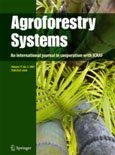Increasing smallholder incomes and improving the environment are often viewed as conflicting objectives. Rotational woodlots in Tanzania appear to help farmers generate substantial income while at the same time conserving forest area. In the rotational woodlot system, farmers intercrop food crops with leguminous trees during the first 2–3 years, leave the trees to grow, harvest the trees in the 5th year, and replant food crops. Of three species planted in an on-farm trial involving 60 farmers, Acacia crassicarpa (A. Cunn. ex Benth.) performed best, attaining a height 96% higher and a root collar diameter 76% higher, than the second ranked species, Acacia jurifera (Benth.). In spite of higher costs and a longer payoff period, the crassicarpa woodlot achieved returns to land 6.3 times greater, and returns to labor 2.0 times greater, than the maize (Zea mays L.)-fallow system. Farmers use fuelwood to cure tobacco (Nicotiana tabacum) and they greatly appreciate substituting relatively abundant land and slack season labor for scarce cash required for purchasing fuelwood that is harvested in the forest. Adoption of rotational woodlots in Tabora District alone can conserve 8675 ha forest per year, or 0.8% of total wooded area in the district. Farmers’ interest is high and 87% of those involved in the trial have expanded their area under woodlots. Research and development projects can benefit individual farmers and society by helping them to make the transition from depleting forest resources to planting trees on their own farms.
DOI:
https://doi.org/10.1016/S0167-8809(01)00165-7
Altmetric score:
Dimensions Citation Count:
00165-7&apiKey=3948bb216041dbffcb29a618defafc29&httpAccept=image%2Fjpeg)






















